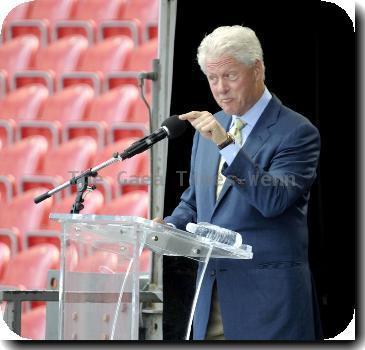Utah fears repeat of land grab by feds, wary of list of national monument candidates in West
By Brock Vergakis, APTuesday, February 23, 2010
Utah wary over national monument candidate list
SALT LAKE CITY — The possibility that the federal government could designate millions of acres in the West as national monuments and off-limits to development is stoking fears and generating resentment in some energy-rich states.
An internal U.S. Department of the Interior document lists 14 sites in nine states that could be designated as national monuments through the federal Antiquities Act, which gives presidents the authority to designate monuments without congressional approval. Three sites in Alaska and Wyoming are listed as worthy of protection but ineligible for monument designation.
The Interior Department insists the document is a product of brainstorming and nothing more.
Many people here are still furious about then-President Bill Clinton’s designation of the Grand Staircase-Escalante National Monument in 1996 after his administration made public assurances that it had no plans to do so. Conservative state lawmakers on Tuesday moved forward with legislation that would allow the state to use eminent domain to take federal land that they hope will spark a U.S. Supreme Court battle.
Interior Secretary Ken Salazar met with Western governors over the weekend in Washington to assure them that President Barack Obama’s administration doesn’t intend to repeat Clinton’s actions.
Republican Utah Gov. Gary Herbert said he doesn’t have any reason not to trust Salazar, but it’s a harder sell among some state residents.
“The issue in the past is that they told us one thing and did the other. They never have taken into account how important the public lands are in the state,” said Vaughn Johnson at a protest Tuesday at the Utah Capitol. “The last time they did that in Grand Staircase, they locked out a lot of ranchers, they locked out a whole bunch of clean coal.”
“I keep thinking about what President Clinton did to us … came in here, snuck in here, did the land grab. I can see that happening right now. That’s my biggest concern,” said Gary Wilcox of Hurricane, in southern Utah.
Johnson was one of more than 200 people who showed up to support a measure introduced a day earlier by U.S. Sen. Bob Bennett, R-Utah, that would require congressional approval of future monuments in Utah. A similar exemption was granted to Wyoming in 1950.
The Interior Department document mentions two possible designations in Utah — the San Rafael Swell and Cedar Mesa in the southern part of the state.
The San Rafael Swell is home to tar sands and natural gas that could be used commercially and has geological formations that could be of use to trap carbon dioxide, according to the Utah Geological Survey. It’s also home to eight rare plant species as well as other wildlife, including bobcats, eagles and coyotes.
“It’s sort of a spectacular scenic landscape. It’s not surprising that the administration would try to protect it,” said Heidi McIntosh, associate director of the Southern Utah Wilderness Alliance. “The main conflict, generally speaking in both Cedar Mesa and the San Rafael Swell, is the out-of-control off-road vehicle use.”
However, many residents here contend it is the federal government that is getting out of control with its limitations on the use of federal lands.
“I don’t trust the present administration at all,” said Gerry Williams, a Midvale man who was one of scores of off-road vehicle enthusiasts at the Capitol. “There are lots of us that physically aren’t capable of hiking three or four days to a monument, but I can take my Jeep out … and we can enjoy the beautiful scenery.”
Some of the other sites mentioned in the Interior Department document include the Berryessa Snow Mountains in California, the Northwest Sonoran Desert in Arizona and the San Juan Islands in Washington state. A Republican congressman from Washington, U.S. Rep. Doc Hastings, said in a statement that the designations would “potentially lock-up tremendous amounts of public and private land without public knowledge or input.”
Tags: Arizona, Barack Obama, Bill Clinton, Geography, Mesa, Municipal Governments, North America, Salt Lake City, United States, Utah, Washington





